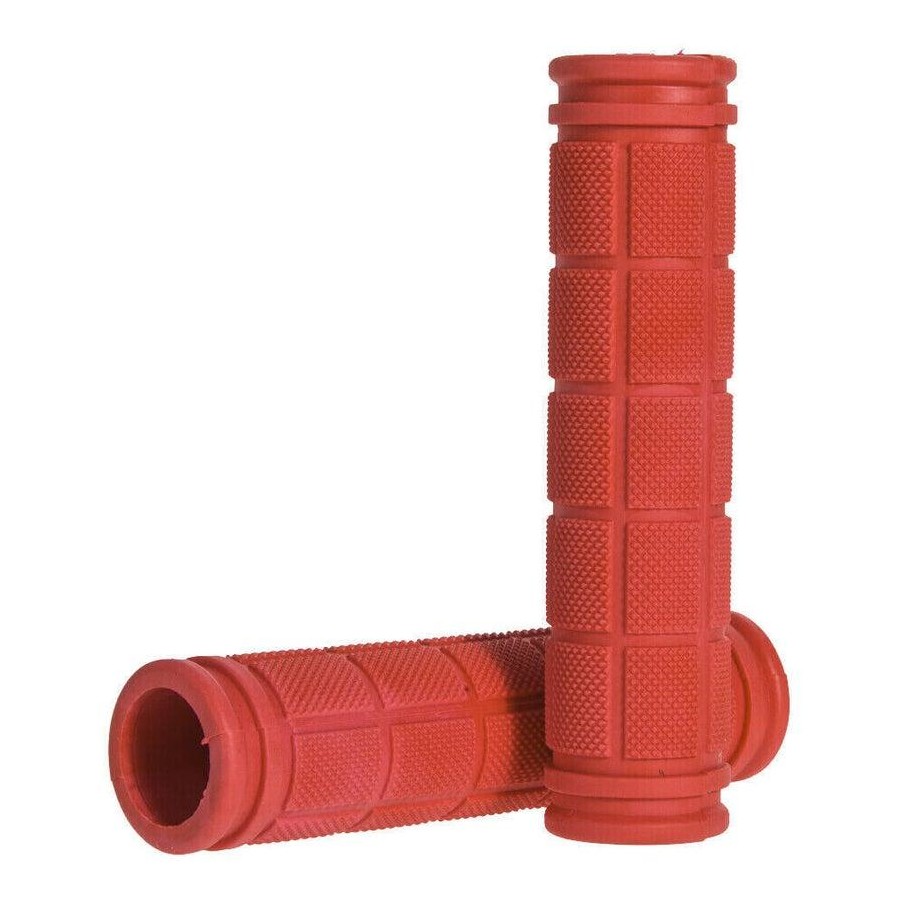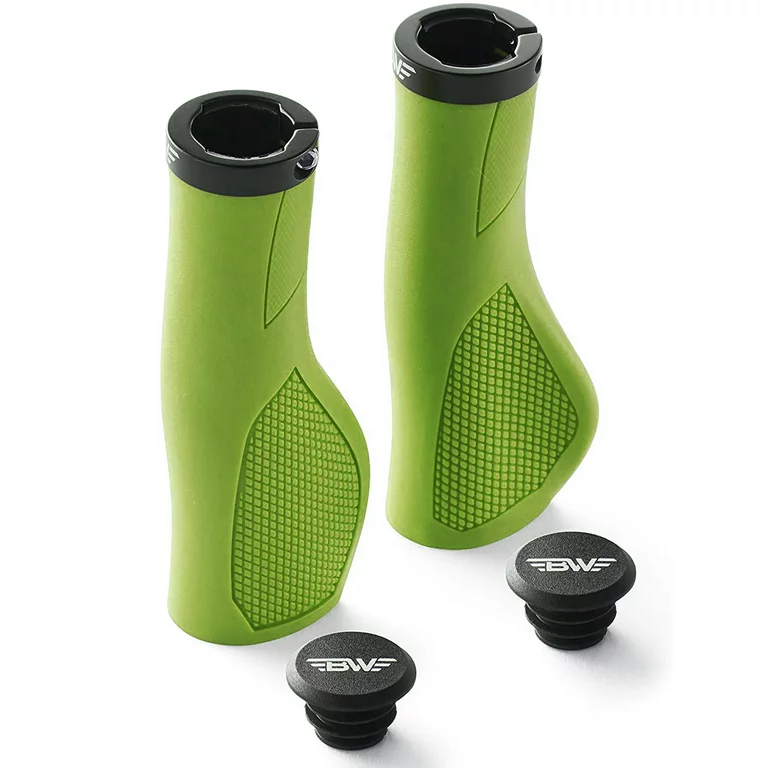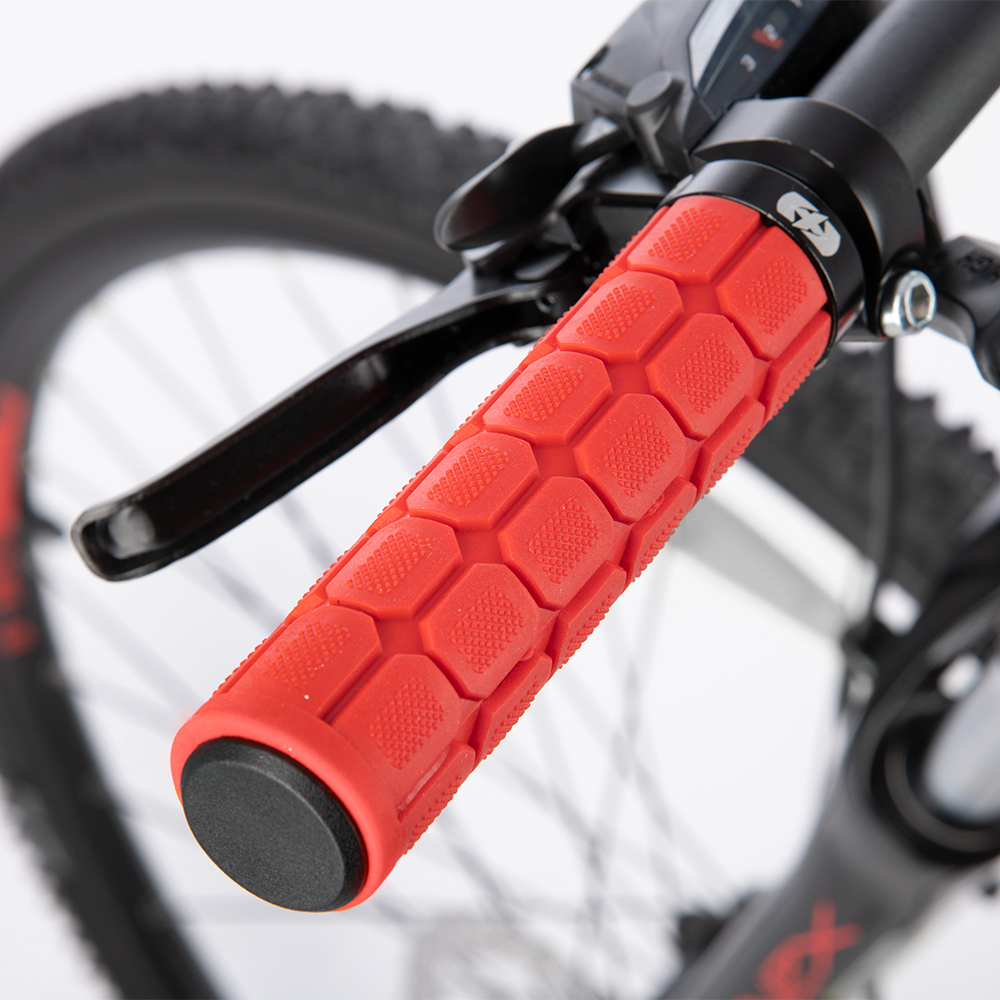I. Introduction

A. Definition and Importance of Bicycle Grips
Bicycle grips are the rubber, foam, or silicone coverings that are attached to the handlebars of a bicycle. They are an often overlooked, yet critical component of a bike, providing the interface between the rider and the handlebars. The grips play a pivotal role in maintaining control, offering comfort, and influencing the overall riding experience. As such, choosing the right grips is essential for every cyclist.
B. Overview of the Role of Grips in Cycling Performance
The role of grips in cycling performance cannot be overstated. They are the direct point of contact for the rider, transmitting control inputs and absorbing feedback from the terrain. Grips not only impact the comfort and control of the rider but also play a role in reducing hand fatigue and preventing hand injuries. Understanding the different types of bicycle grips and the factors to consider when choosing them is crucial in optimizing cycling performance.
II. Types of Bicycle Grips
There are various types of bicycle grips, each designed to cater to different needs and preferences of cyclists.
A. Ergonomic Grips
Ergonomic grips are designed with a shape that conforms to the natural position of the hands and fingers, providing additional support and promoting a more comfortable and relaxed grip. The ergonomic design is intended to reduce pressure on the palms and alleviate numbness or tingling often associated with extended rides.
B. Lock-On Grips
Lock-on grips are equipped with a built-in locking mechanism, securing the grips in place on the handlebars. The lock-on feature prevents the grips from slipping or rotating during rides, offering a secure and stable connection between the rider and the bike, especially in off-road or rough terrain conditions.
C. Foam and Silicone Grips
Foam and silicone grips are known for their lightweight and vibration-dampening properties. They offer a soft and cushioned feel, reducing the impact from rough surfaces, while silicone grips provide a tacky and non-slip surface, particularly suitable for wet conditions. Both options are favorable for riders seeking increased comfort and reduced hand fatigue.
III. Factors to Consider When Choosing Bicycle Grips

When selecting bicycle grips, several key factors should be taken into account to ensure the best fit for individual needs and preferences.
A. Grip Material and Texture
The material and texture of grips play a significant role in determining the level of comfort and control. Riders can choose from rubber, foam, silicone, or even leather grips, each offering distinct qualities in terms of grip, durability, and tactile feel. Texture variations, such as smooth, patterned, or textured surfaces, also impact the grip’s traction and feel.
B. Grip Size and Shape
The size and shape of grips should match the rider’s hand size and riding style. Grips that are too large or too small can lead to discomfort and hand fatigue. Additionally, some grips are designed with a flared shape to provide support for the palm and prevent hands from sliding off during intense riding.
C. Impact on Riding Style and Comfort
Ultimately, the chosen grips should align with the rider’s specific riding style and comfort preferences. Factors to consider include the riding terrain, the duration of rides, and any ergonomic considerations related to hand and wrist positioning. Riders seeking increased comfort for long rides may prioritize vibration-absorbing properties, while those riding technical trails may place higher importance on grip security and control.
IV. Installation and Maintenance of Bicycle Grips
A. Proper Installation Techniques
Installing bicycle grips correctly is essential for ensuring optimal performance and safety during rides. The process typically involves removing the old grips, cleaning the handlebars, and securely installing the new grips. Proper techniques such as using grip glue or compressed air for grip installation can be crucial in preventing slippage and ensuring a firm grip attachment.
B. Cleaning and Maintenance Tips
Maintaining clean and well-maintained grips not only enhances their longevity but also contributes to a comfortable and secure riding experience. Regular cleaning to remove dirt, sweat, or debris from the grips is recommended, using mild soap and water. Additionally, inspecting the grips for signs of wear and tear and addressing any issues promptly can prolong their lifespan.
C. Replacing Worn-Out Grips
Worn-out or damaged grips can compromise the rider’s comfort and control. As grips age, they may lose their traction and cushioning properties, leading to hand fatigue and reduced handling performance. When signs of wear become apparent, it is crucial to replace the grips to maintain optimal comfort and safety during rides.
V. Customizing Grips for Different Riding Preferences

When it comes to cycling, one size does not fit all, especially when it comes to grips. The type of grips you choose can significantly impact your riding experience, so it’s important to customize them to your specific riding preferences. Whether you’re into mountain biking, road cycling, or commuting and touring, there are grips designed to meet your unique needs.
A. Grips for Mountain Biking
Mountain biking requires grips that can provide maximum shock absorption and a secure hold, especially when tackling rough and challenging terrains. Grips with ergonomic and cushioned designs are ideal for mountain biking as they offer comfort and reduce hand fatigue during long rides. Look for grips with a larger diameter to provide a better grip for technical sections, and consider ones with a lock-on feature to ensure they stay in place even in the most demanding conditions.
B. Grips for Road Cycling
In contrast to mountain biking, road cycling grips are typically designed for a more streamlined and aerodynamic riding position. Grips with a thinner profile and a firmer feel are preferred by road cyclists to ensure a direct and responsive connection to the bike. Look for grips made from durable and lightweight materials such as foam or rubber, and consider options with additional padding to minimize road vibrations and discomfort during long rides.
C. Grips for Commuting and Touring
For commuters and touring cyclists, comfort and longevity are key factors when selecting grips. Ergonomically shaped grips with a softer compound are recommended to provide a comfortable and supportive hold, especially for riders who spend extended periods on their bikes. Consider grips with integrated bar ends to provide additional hand positions and relieve pressure on the wrists during long rides. It’s also important to choose grips that are weather-resistant and easy to clean, as they will endure regular use and various environmental conditions.
VI. Importance of Properly Fitted Bicycle Grips
A. Comfort and Reduced Fatigue
The significance of properly fitted bicycle grips cannot be overlooked, as they directly impact a rider’s comfort and endurance on the bike. Ill-fitting grips can lead to hand numbness, pain, and discomfort, which can ultimately result in reduced riding enjoyment and performance. By customizing grips to suit your riding preferences, you can ensure a comfortable and supportive hold that minimizes hand fatigue and allows you to ride for longer periods with ease.
B. Enhanced Control and Handling
Properly fitted grips play a crucial role in providing riders with enhanced control and handling of their bikes. Grips that are too small or too large can compromise a rider’s ability to maintain a secure hold and confidently maneuver the bike, particularly in challenging riding conditions. By choosing grips that fit your hands comfortably and securely, you can improve your overall riding experience and feel more in control of your bike.
C. Injury Prevention and Long-Term Health Benefits
In addition to comfort and control, properly fitted grips also contribute to injury prevention and long-term health benefits for cyclists. Grips that are too small or too large can cause unnecessary strain on the hands, wrists, and arms, leading to potential injuries such as tendonitis, carpal tunnel syndrome, and nerve compression. Customizing grips to your specific hand size and riding preferences minimizes the risk of such injuries and promotes better hand and wrist health over time.
In conclusion, selecting and maintaining the right set of bicycle grips is pivotal in achieving optimal comfort, control, and safety during rides. By considering the diverse types of grips, installation and maintenance techniques, customization for specific riding preferences, and the overall impact of properly fitted grips, cyclists can ensure a more enjoyable, comfortable, and sustainable riding experience.
